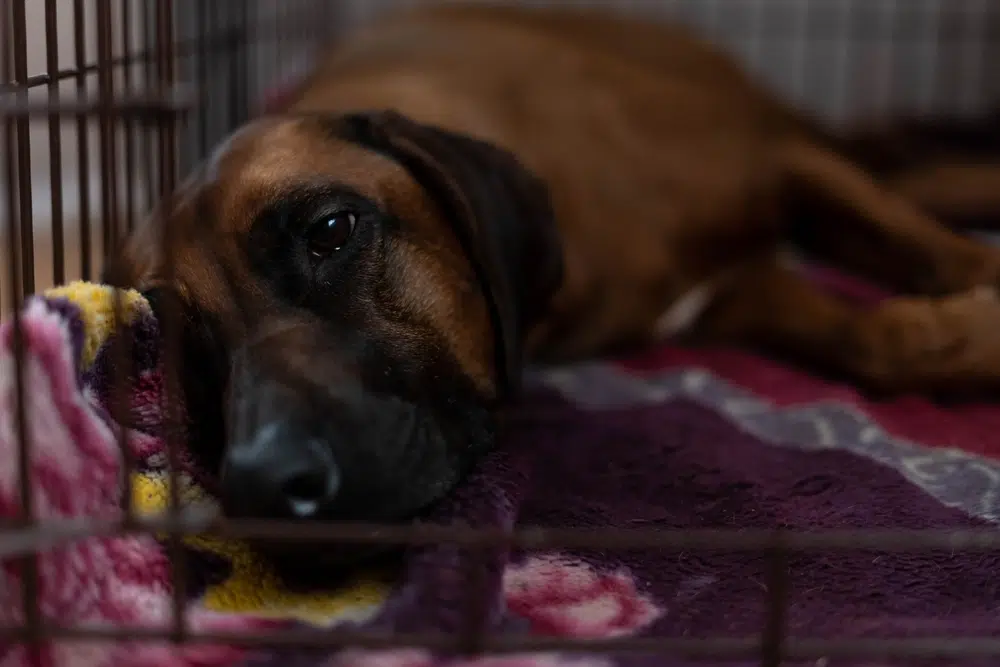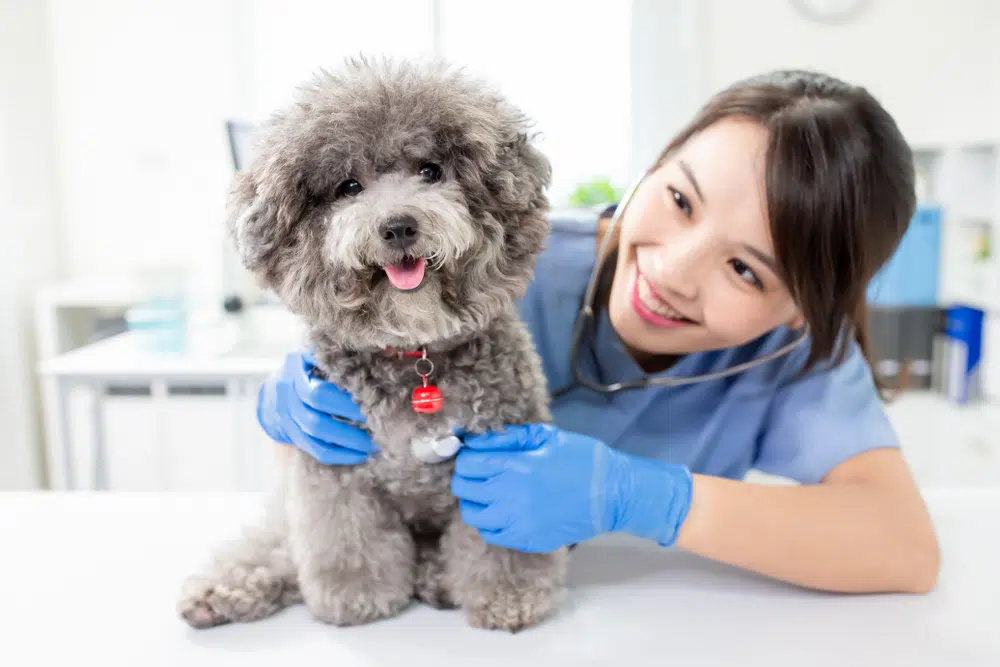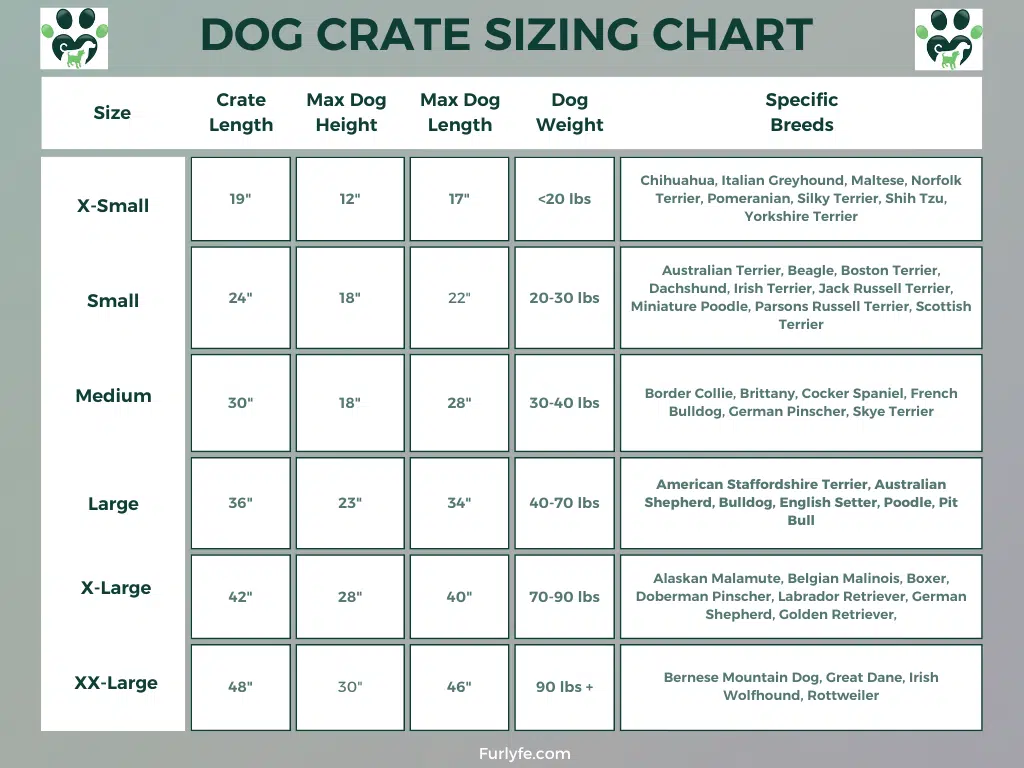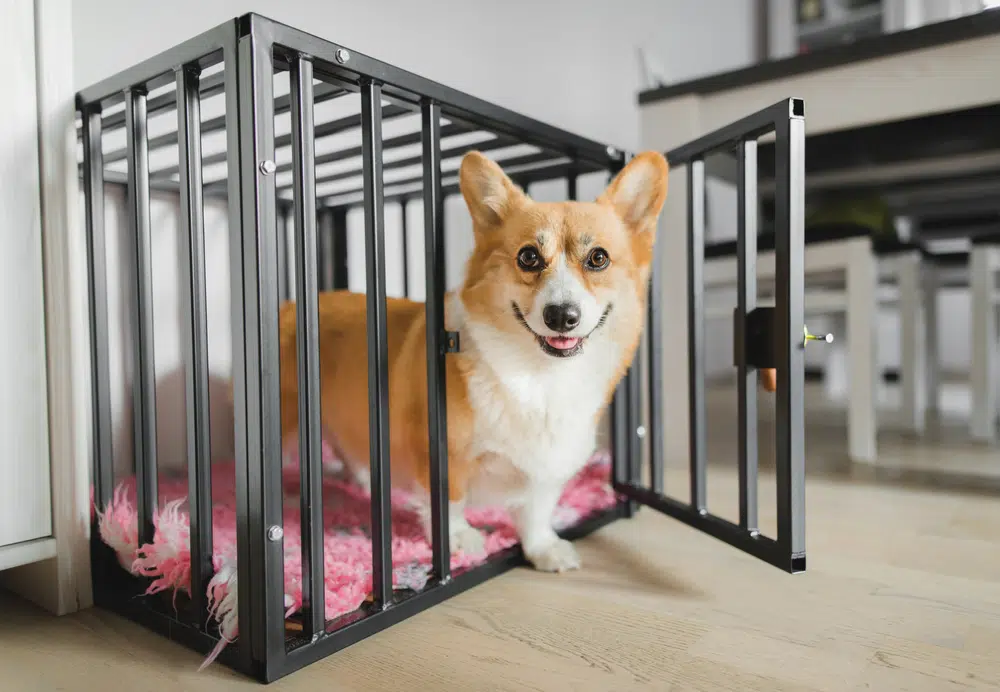Overcoming Dog Crate Training Regression: Tips, Causes, and Solutions
Part 1: Introduction to Crate Training Regression
Dog ownership brings immense joy and companionship, but it also comes with responsibilities, one of which is ensuring proper behavior through training. Crate training is a fundamental aspect of dog behavior training, allowing dogs to have a safe, comfortable space of their own. However, a common challenge faced by many dog and puppy owners, is Dog Crate Training Regression.
Definition of Dog Crate Training Regression
Dog Crate Training Regression occurs when a dog, after being successfully crate trained, starts to refuse to enter or stay in the crate. It is a manifestation of a behavioral issue that is not uncommon and can be a source of stress for both the dog and the owner. Addressing this regression is crucial as it impacts the overall well-being of the dog and the harmonious living environment within the home.
Importance of Addressing Regression in Crate Training
Unresolved crate training regression can lead to further behavioral issues in adult dogs and can significantly affect the relationship between the dog and the owner. It is essential for maintaining a stress-free and balanced cohabitation. Understanding and addressing the causes of such regression are pivotal in fostering a positive and loving relationship with our canine companions.
Brief Overview of the Article Content
This article aims to be a comprehensive guide for dog owners, providing extensive information and practical tips on identifying signs of crate training setbacks, exploring its causes, and offering steps to address and prevent it. The objective is to equip dog owners with the knowledge and tools necessary to deal with crate training regression effectively and to promote positive reinforcement and consistency in training practices.
Setting the Expectation
While the insights and tips provided in this article are extensive, it’s important to note that severe cases of regression may necessitate consultation with a veterinarian or a professional dog trainer.
Patience, understanding, and a consistent approach are key in addressing any form of dog obedience issues, including crate training issues and regression.
Part 2: Identifying Crate Training Regression
Understanding and identifying crate training regression is the first step in addressing this behavioral issue. Observing your dog’s behavior and response to crate training can provide insights into any discomfort or distress they might be experiencing. Being vigilant about any changes in behavior is crucial in maintaining a harmonious relationship with your furry friend.
A. Signs of Crate Training Regression
Refusal to Enter the Crate on Command A sudden refusal to enter the crate, despite previous training, is a clear sign of regression. Observing your dog’s reluctance and understanding their response to commands are essential in identifying the onset of regression. Addressing such refusal promptly is vital in preventing the escalation of behavioral issues.
Inability to Relax and Get Comfortable in the Crate If your dog is restless and constantly fidgeting inside the crate, it may indicate discomfort and regression. Ensuring your dog’s comfort inside the crate is paramount to avoid further behavioral issues. Regular inspection of the crate’s condition and ensuring comfort and safety are key in maintaining a positive crate training experience.
Whining for Seemingly No Reason Unexplained whining, especially when the dog is in the crate, is a sign of distress and of puppy crate training regression. Addressing such behaviors promptly is essential to avoid escalation and to maintain a stress-free environment for the dog. Understanding the causes of such whining and alleviating separation anxiety are crucial steps in resolving crate training regression.
B. Causes of a Regress in Crate Training
Testing Boundaries Dogs, especially puppies, often test boundaries, which can lead to regression in crate training even for a fully crate trained dog. Consistent training and positive reinforcement play a significant role in maintaining trained behaviors. Being consistent with positive reinforcement training methods and firm in training practices is essential in preventing regression due to boundary testing.
Separation Anxiety Separation anxiety is a common cause of regression in crate training. Strategies to alleviate anxiety and reinforce positive behaviors are essential in addressing this cause. Implementing strategies to reduce anxiety and promote a sense of security are vital in maintaining successful crate training.
Physical Discomfort Discomfort due to the crate’s condition or size can lead to regression. Regular crate inspection and ensuring the crate is of appropriate size are important in preventing discomfort-related regression. Addressing any signs of physical discomfort promptly is crucial in maintaining a comfortable and safe crate environment.
Unpleasant Smell or Unfamiliar Scent in the Crate A change in scent or an unpleasant smell in the crate can make the dog uncomfortable, trigger negative association, and lead to regression. Maintaining cleaning practices and using familiar items inside the crate can help in maintaining a comforting environment. Regular cleaning and the use of comforting scents are essential in preventing regression due to unpleasant or unfamiliar smells.
Part 3: Addressing Crate Training Regression
Addressing crate training regression is pivotal in maintaining a balanced and harmonious relationship with your dog. It involves a combination of re-establishing positive associations, consistent training practices, and addressing any underlying issues that may be contributing to the regression. Implementing effective strategies and seeking professional advice when needed are crucial in resolving those experiencing crate training regression.
A. Steps to Fix Crate Training Regression
Re-establishing Positive Associations with the Crate Re-establishing positive associations with the dog’s crate is essential. This can be achieved by feeding meals and giving treats and toys inside the crate, making it a pleasant environment for the dog. Using comfortable bedding and familiar items can also help in making the crate more enticing and comforting for the dog.
Restarting the Crate Training Process Sometimes, going back to the basics and restarting the crate training process is necessary. It’s important to be patient and work at the dog’s pace, ensuring that each step is well understood and accepted by the dog. Consistency in commands and positive reinforcement techniques are key in re-establishing successful crate training.
Consistency and Positive Reinforcement Maintaining consistency in commands and providing positive reinforcement such as treats and praises play a significant role in addressing regression. Addressing any signs of distress promptly and reinforcing positive behaviors consistently are essential in maintaining a successful puppy crate training experience.
Addressing Underlying Issues Addressing any underlying issues like separation anxiety or physical discomfort is crucial. If such issues are causing the regression, they need to be resolved to achieve successful crate training. Consulting a veterinarian or a professional dog trainer can provide valuable insights and strategies to address these underlying issues effectively.
B. Consultation and Veterinary Advice
When to Consult a Veterinarian Recognizing the signs and symptoms that warrant a visit to the veterinarian is important. Ruling out any medical issues that could be causing the dog’s crate training regression is a crucial step in addressing crate training regression. Seeking veterinary advice is essential in ensuring the well-being of the dog and addressing any health-related concerns promptly.
Seeking Professional Dog Training Advice Seeking advice from a professional dog trainer can be beneficial in addressing behavioral issues related to crate training regression. Different approaches and techniques may be used by professional trainers to address specific issues, and implementing these strategies can help in resolving regression. Following the recommended training techniques accurately and consistently is vital in achieving long-term success in a puppy’s crate training regression.
Implementing Professional Advice Effectively implementing the advice and training techniques recommended by veterinarians and professional dog trainers is crucial. It involves being consistent, patient, and understanding of the dog’s needs and behaviors. Adhering to professional advice and maintaining a positive and encouraging approach are pivotal in fostering a loving and obedient relationship with your dog.
Part 4: Preventive Measures and Tips
Preventing crate training regression is as crucial as addressing it. By maintaining consistency in training, ensuring comfort and safety, monitoring behavioral changes, and providing a balanced diet and regular exercise, dog owners can foster a positive and obedient relationship with their dogs. Implementing preventive measures can significantly contribute to the overall well-being and happiness of your furry companion.
A. Maintaining Consistency in Training
Importance of Consistent Commands and Cues Consistency in commands and cues is pivotal in avoiding confusion and reinforcing learned behaviors. Inconsistency can lead to regression, and maintaining a routine can significantly aid in reinforcing positive behaviors and preventing the development of undesirable habits.
Role of Routine in Training Establishing and adhering to a routine is essential. A balanced routine that includes crate time, playtime, and walk time can help in maintaining a structured environment for the dog. Sticking to a well-balanced routine is key in fostering a sense of security and stability for your dog.
B. Ensuring Comfort and Safety
Regular Inspection of the Crate Regularly inspecting the crate for any signs of wear and tear is crucial to prevent discomfort and ensure the safety of the dog. Establishing a routine for regular inspection and maintenance of the crate is essential in maintaining a safe and comfortable environment for your dog.
Right Crate Size and Comfortable Bedding Choosing the right crate size and providing comfortable bedding are vital in preventing discomfort and anxiety. Following guidelines on selecting the appropriate crate size and bedding is crucial in ensuring the comfort and well-being of your dog.
C. Monitoring Behavioral Changes
Observing Dog’s Behavior Regularly Regular observation of the dog’s behavior is essential in identifying any changes or signs of distress early. Keeping a behavior log can help in tracking changes and addressing issues promptly. Addressing behavioral changes at the earliest is pivotal in preventing the escalation of issues and maintaining positive behaviors.
Addressing Behavioral Changes Promptly Addressing observed behavioral changes promptly is significant in preventing the development of bad habits and regression. Modifying training strategies based on observed behavioral changes can ensure the continued success of your crate training program. Being proactive in modifying training strategies is essential in fostering a loving and obedient relationship with your dog.
D. Balanced Diet and Regular Exercise
Providing a Balanced Diet A balanced diet is crucial for the overall well-being of the dog and can aid in preventing behavioral issues. Choosing the right diet based on the dog’s age, breed, and health conditions is essential in maintaining the health and happiness of your dog.
Ensuring Regular Exercise Regular exercise plays a significant role in maintaining the physical and mental health of the dog. It helps in preventing behavioral issues related to boredom and pent-up energy. Establishing a routine for regular exercise is vital in keeping your dog active, healthy, and happy.
Part 5: Conclusion
Concluding, addressing and preventing crate training regression is pivotal in fostering a loving and obedient relationship with our canine companions. It requires a combination of understanding, patience, consistency, and a proactive approach to identifying and addressing signs of regression. Implementing the strategies and insights discussed in this article can significantly contribute to the overall well-being and happiness of your furry friend.
A. Recapitulation of Identifying and Addressing Crate Training Regression
Summary of Signs and Causes We have discussed various signs and causes of crate training regression, emphasizing the importance of early identification and prompt addressing of any signs of regression. Being vigilant about the dog’s behavior and response to crate training is crucial in maintaining a harmonious living environment.
Summary of Addressing Strategies The article provided a comprehensive guide on the strategies and steps to address crate training regression, highlighting the role of consistency and positive reinforcement in resolving regression effectively. Being consistent and positive in training approaches is essential in fostering a positive and obedient relationship with the dog.
B. Emphasis on Patience, Consistency, and Understanding the Dog’s Needs
Importance of Patience and Consistency Patience and consistency throughout the entire crate training process have been emphasized as significant elements in maintaining successful crate training. Understanding and addressing the individual needs and preferences of the dog are pivotal in preventing and addressing crate training regression.
Understanding and Addressing Dog’s Needs The necessity of being attentive to the dog’s needs and concerns and addressing them effectively was stressed, focusing on the individuality of each dog’s needs and responses. Adapting training approaches based on individual dog’s needs and responses is crucial in enhancing the dog-owner relationship.
C. Encouragement for Responsible Pet Parenting
Role of Responsible Pet Ownership Responsible pet ownership and attentiveness of pet parents to dogs’ behaviors and needs were encouraged, emphasizing their impact on the well-being and happiness of the dog. Being a responsible pet parent is essential in ensuring the happiness and well-being of our furry companions.
Continued Learning and Adaptation The article encourages continuous learning about dog behavior and training and adapting approaches based on individual dog’s needs and responses. Embracing learning and adaptation is key in maintaining a loving and understanding relationship with our dogs.
Frequently Asked Questions
Q1: How can I prevent crate training regression?
A1: Preventing crate training regression involves maintaining consistency in training and commands, ensuring the comfort and safety of the dog’s crate training, addressing any behavioral changes promptly, providing a balanced diet and regular exercise, and understanding and addressing the individual needs and preferences of your dog.
Q2: How important is consistency in preventing and addressing crate training regression?
A2: Consistency is crucial in preventing and addressing crate training regression. Consistent commands, training routines, and positive reinforcement help in reinforcing learned behaviors and preventing confusion and anxiety in dogs, which can lead to regression.
Q3: Can changes in the environment lead to crate training regression?
A3: Yes, changes in the environment such as a move to a new home, introduction of a new pet or family member, or changes in the household routine can lead to crate training regression as they can cause stress and anxiety in dogs.
Q4: How can I re-establish positive associations with the crate?
A8: Re-establishing positive associations with the crate can be achieved by feeding meals in the crate, providing treats and toys inside the crate, using comfortable bedding, and ensuring the crate is a pleasant and safe environment for the dog. Positive reinforcement and patience are key in re-establishing positive associations.
Q5: Should I stop crate training if my dog shows signs of regression?
A5: Stopping crate training abruptly can cause more stress and confusion for the dog. Instead, identify and address the underlying causes of regression, re-establish positive associations with the crate, and maintain consistency in training. If needed, consult a veterinarian or a professional dog trainer for guidance and support.

















Get involved!
Comments